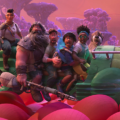Cognition Dissemination: Why Wouldn’t They Remake How to Train Your Dragon?

The next animated work announced to receive a live-action remake, whether it needed one or not, is How to Train Your Dragon. The movie is slated to release on March 14th, 2025 courtesy of DreamWorks and Universal, with writer and director Dean Deblois retaining the position from the three animated movies. This should ensure that the live-action iteration will at least inherit the quality of its animated brethren, assuming he has complete control of the creative process. But quality is never guaranteed with high-budget movies from big studios.
There’s a key question being asked here: Why? Live-action remakes of animated movies have become common, but the original How to Train Your Dragon only released in 2010, nowhere near as old as those, comparatively, Disney has announced and remade. The animated film remains palatable for people of all ages, and is currently on a free service if you can tolerate ads. (I personally refuse to during a movie.) It can be considerably more difficult, if not impossible, to replicate specific elements from animated iterations in live action, especially when the movie takes place in a pretty medieval fantasy world that involves all sorts of massive creatures like dragons.
None of that is relevant, though. Asking “why?” this exists is not the right question. The correct one is “why not?”
Consider how well prior live-action movies have performed. The Beauty and the Beast remake made $1.266 billion at the worldwide box office, considerably more than the original 1991 animated film’s $425 million. A similar argument applies when comparing the Aladdin remake and animated versions ($1.1 billion vs. $504 million — at least this one’s closer), and The Lion King remake and animated versions ($1.663 billion vs. $968.5 million — not too far from each other). The differences there aren’t significant when accounting for inflation, but it couldn’t be clearer that Disney counted them as successes when they announced sequels and prequels to some of them, precisely for Aladdin (presumably still happening) and Mufasa: The Lion King. The business sense behind a How to Train Your Dragon remake is so solid that there’s little reason why DreamWorks and Universal wouldn’t green light one.

I do understand the logic behind why anyone would wonder why this exists. Live-action remakes garner a lot of money despite most Disney examples being inferior to their original versions. The Aladdin and Beauty and the Beast remakes were entertaining, but lacked the unique charms the animated versions included thanks to their need to embrace realism. The Lion King remake, however, felt like the original movie with the soul sucked out of it with the realistic CG usage, while the less said about the Dumbo remake, the better. The last film aside, the general audience adores this remake trend, as shown through the aforementioned box office results. The audience for these is not nostalgic internet dwellers who came of age in the 1980s and, more relevant to several Disney examples mentioned in this post, the 1990s.
Hollywood also favors live-action works over animated movies and does not consider them Cinema®, as a number of creatives have acknowledged. Guillermo del Toro, who released a highly-received Pinocchio film on Netflix last year (which notably smoked the maligned Disney remake of the film), went out of his way to mention that “animation is cinema” at the Golden Globes. “Animation is not a genre for kids. It’s a medium,” he said. The director of Puss in Boots: The Last Wish (a movie that’s shown astounding box office legs), Joel Crawford, echoed similar thoughts in an installment of Variety’s Awards Circuit Podcast. He mentioned how the medium is overlooked and undervalued by Hollywood. Beauty and the Beast’s Oscar nomination for Best Picture was a step forward for animation’s acknowledgment as a serious medium to Hollywood back in 1992, albeit one among many.
The How to Train Your Dragon live-action version will inevitably inherit the criticisms of other remakes, with how different an interpretation it will need to be. Charming animated characters will be replaced with human beings, and the dragons themselves will be made more realistic. But fully expect the audience to love it, including kids who weren’t around to watch the original films and adults who think they’re too old to watch “cartoony” material. The scenario that occurred with Disney films will be repeated.
For anyone tired of this trend of animation not being good enough for a certain crop: I’m sorry to say that it won’t be ending anytime soon. DreamWorks and Universal are unlikely to stop with How to Train Your Dragon, unless the results underwhelm critically and commercial. Disney has several more examples on the horizon, too, including a remake of The Little Mermaid due for release on May 26th. Hopefully the scenarios that del Toro and Crawford put out will come to pass, but it will take years to even take mere steps in that direction.





